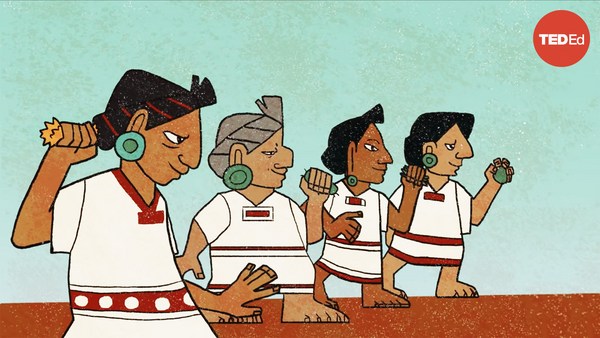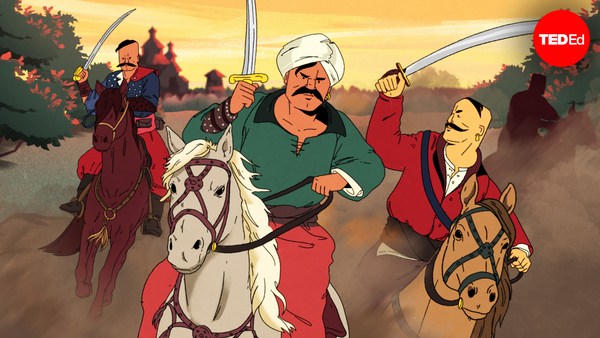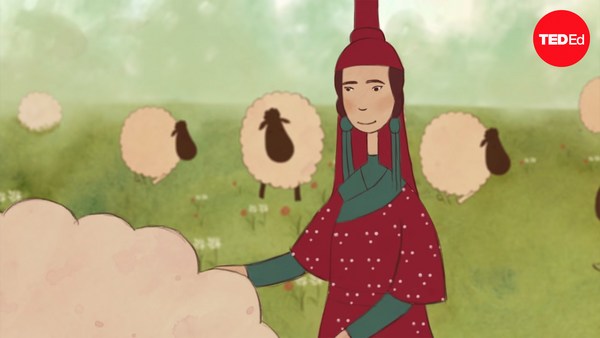At the temple of the fisherman, Quexo, the village shaman, looks out over the ocean and frowns. It’s a still morning– unusually still, and the lack of wind is the latest in a series of troubling signs.
The year is 1400 BCE. Quexo’s village sits in the dusty, treeless desert between the towering Andes and Pacific Ocean. The villagers live off the sea, harvesting reeds, drying them in the sun, and using them to build fishing boats. Every day in the summer, the men set out on these boats to hunt shark and other fish while the women harvest shellfish and sea urchins. In winter, storms bring powerful waves, which cross the vast ocean unobstructed to detonate on these shores.
Most years, Quexo’s village catches more than enough fish. But this year, the winds have died and the fish have dwindled. Quexo has seen this pattern before: the fish disappear, then the violent rains arrive, causing flash floods that dissolve mud bricks and wash away settlements. He needs to stop the bad weather before the storms come— his only hope is a special ritual he’s been planning.
Quexo spends much less time in the ocean than the other villagers. He became a shaman after seeing a sign in the sea one morning— like his father and grandfather before him. This morning, he walks to the nearby sacred mountain as the sun rises. There, he gathers ceremonial cactus and herbs like “horse tail,” “stonebreaker," and valerian, along with the mineral hematite.
Back in the village, everyone is preparing to leave for a religious festival at a large temple inland. The festival marks the beginning of what is usually the season of abundance, but with the signs pointing to storms, Quexo isn’t feeling too celebratory.
Whole families travel to the festival, where they camp for a few days. They’ve packed seaweed, carved bones, gourd bowls, reed mats, and other goods to trade in the market around the temple. Quexo inspects the goods to make sure everything is of the finest quality. He brings the herbs he gathered to trade for cinnabar, a mineral that comes from the highlands in the Andes. He needs cinnabar for his ritual to ward off the storms.
Around lunchtime, the sprawling temple rises out of the desert ahead. People have come from all along the coast and the foothills. The women handle trade transactions— they’re looking for cotton and ceramics. Men aren’t usually allowed to do the trading, but shamans are an exception. Though Quexo is a man, during rituals he becomes half man, half woman, and this ambiguity makes his role more flexible outside ceremonies too.
Quexo can’t find any cinnabar in the market, so he heads to the main temple, dodging children playing in the plaza. He puts on his ceremonial garb: red face paint, earrings, and a necklace of shark’s teeth and vertebrae. Inside, the ceremonies are already underway, and the shamans have drunk the sacred cactus drink. Many of them are Quexo’s friends from festivals over the years, but he doesn’t see the mountain shamans who would have cinnabar.
He begins to panic. If the highland shamans don’t show up, his only option will be to make the long walk into the mountains. It’s a dangerous journey that takes five days, precious time he doesn’t have to waste.
But perhaps he has no choice. He refuses the sacred cactus and sets off toward the mountains.
As he leaves the settlement behind, he sees a group approaching. He recognizes them as highlanders by their llamas. He dashes toward their shaman. Barely pausing to say hello, he offers him hematite, dried seaweed, and empty shells to grind up for lime and chew with coca leaves. In return, the other shaman gives him the precious cinnabar.
With the key to his ritual in hand, Quexo heads home to the temple of the fisherman in hopes of turning the tide.


